” I will never get married,
I will never acquire any property,
I will never visit my home,
I will devote and dedicate the rest
of my life to achieve the goals
of Phule -Ambedkar movement”
These pledges remind the work of Manywar Kanshiram Sahib who is remembered in the history of India as a True leader of Bahujan Samaj. The journey of Kanshi Ram and his movement of socio-cultural revolution and economic emancipation of Bahujan Samaj started way back in 1964. Kanshi Ram, the eldest son of Mr. Hari Singh, resident of Khawaspur village of Punjab’s Roper district, was born on 15th March, 1934, in a Sikh family belonging to the Ramdasia Community. After qualifying the examination conducted by the Defense Science and Research Development Organization, he moved to Pune in Maharashtra and joined the Explosive Research and Development Laboratory at Kirkee, where he was exposed to the bad breath of Hindu social order i.e. atrocious caste system. In the ordinance factory, where Kanshi Ram was working, the management cancelled the holidays of Dr. Babasaheb Ambedkar Jayanti and Buddha Jayanti and instead granted Tilak Jayanti holiday and an additional holiday during Diwali festival. As a reaction to this, not the Ambedkarites from Maharashtra but a Scheduled Caste Mr. Dina Bhana, from Rajasthan, protested against the cancellation of these two holidays. Dina Bhana’s protest resulted in his suspension. By this atrocious act, agitated Kanshi Ram fought the legal battle for Dina Bhana.
As a result, not only was Dina Bhana reinstated but the holidays were also restored. The unjust and casteist act on the part of management resulted in a new awakening in Kanshi Ram, as he did not properly realize the casteist divisions in his youth in Punjab. Thereafter Kanshi Ram studied the literature of Dr. Babasaheb Ambedkar, the biggest destroyer of Brahmanism after Buddha, Jotiba Phule and Periyar. Dr. Ambedkar’s Monumental work, “Annihilation of Castes” influenced Kanshi Ram tremendously. In one night he read the book three times which created not only an impact on Kanshi Ram, but shaped his thinking and future course of actions. Beside Dr. Ambedkar’s writings, Mr. Kanshi Ram found the path of further movement in Dr. Ambedkar’s plan for political action. On 24th September 1944, at Madras, with an absolute clarity Dr. Babasaheb declared the political goal of his struggle. Addressing the large followers he said, “Understand our ultimate goal. Our ultimate goal is to become the rulers of this country. Write this goal on the walls of your houses so that you will not forget. Our struggle is not for the few jobs and concessions but we have a larger goal to achieve. That goal is to become the rulers of the land.” Accordingly the agenda of political power was pursued constantly by Dr. Babasaheb in his further programmes. On 4thOctober, 1945, in the Working Committee meeting of All India Scheduled Castes Federation again he elaborately stressed on the political power and said, “Politics should be the life-blood of the Scheduled Castes.” Since politics of Congress party, the mouthpiece of the dominant castes was detrimental to the very existence and interests of backward class people, Babasaheb tried to form a broad – base movement of all the victims of Brahmanism.
As a part of it, at the Uttar Pradesh Scheduled Castes Federation’s, 5th Convention, at Lucknow on 24, 25 April, 1948 Dr Ambedkar said, “I said that the scheduled Castes and the backward classes form majority of the population of the country. There is no reason why they should not rule this country. All that is necessary is to organize for the purpose of capturing political power which is your own because of adult suffrage. People do not seem to buck up courage because they are overwhelmed by the belief that the Congress Government is there forever. I said this is a wrong impression. In a popular democracy no Government is permanent and not even the government established by the two of the tallest Congressmen, Pundit Nehru and Sardar Patel. If you organize you can even capture that Government.” In the same speech Dr. Ambedkar warned the Backward Classes by saying that; they had suffered because of their political aloofness. They must forge a united front in order to wrest political power from the higher classes because political power is the key to all social progress. He also warned that the SCs cannot capture political power by joining the Congress and if they do that it will only increase the strength of their enemies.
On 18th March, 1956 in a public meeting at Ram Leela ground, Agra, he condemned the highly qualified men belonging to SCs for occupying key posts in government and doing nothing for their poor, oppressed brothers and sisters. Without converting his plans into action, unfortunately, Dr. Babasaheb unexpectedly passed away on 6th December, 1956. During post Ambedkar period, despite Babasaheb’s warning of carrying the caravan ahead his lieutenants failed on all the fronts, causing a set-back to the Ambedkarite movement. The Republican Party of India (R P I) as visualized by Dr. Ambedkar was formed on 3rd October, 1957. But from 1958 the party began to split up under various leaders. The biggest set-back to the party was that, it became a party of Maharashtra and the Mahars (later converted to Buddhism after 1956) and the other sub-castes remained the supporters of Congress and others. The clash of personalities and personal political ambitions took the caravan in a reverse direction.
After severing job-family relations for the success of Ambedkarian movement, Kanshi Ram started working with Republican Party of India, the party conceived by Dr. Babasaheb Ambedkar, but founded by his disciples later on. After near about eight years of working with Republican Party of India, he became disillusioned with its functioning. His dream of Ambedkarite movement was completely shattered when a section of the Republican Party joined hands with Congress for a petty Pandharpur Lok-Sabha reserved seat. This event proved to be a beginning of parting of ways from Republican Party. Thereafter he independently started organizing the employees of Backward Classes mainly from Pune, Bombay, Nasik, Nagpur and Delhi. His ceaseless efforts paid a rich dividend when few employees assembled in Delhi in the year 1973 and decided to float an organization of employees of Backward Class and Religious Minorities,after doing a necessary preparatory work within a period of five years. As an outcome of it, and as per Dr. Ambedkar’s expectation, Kanshi Ram’s first organization took birth on 6th December 1978 in Delhi, called as BAMCEF i.e. the Backward And Minority Communities Employees Federation- a product of deep desire, careful thoughts, conducted experiments and evolved concepts.
Dr. Babasaheb Ambedkar, on 18th March, 1956, in Agra said “I had expected that after acquiring education- higher education-they will serve their downtrodden brethren, but I am dismayed to see here a crowd of clerks who are engaged in feeding their own stomachs.”
After giving the deep and serious thoughts to the sentiments as well as expectations of Dr. Ambedkar, Kanshi Ram considered it as his responsibility to fulfill the same. Then he started working among employees preparing them for the upliftment of the downtrodden. In this process he was successful in articulating among the employees that Babasaheb’s expectation from them and they must be ready to pay back the societal debt in the form of money, labour, brain and time. After some preparatory work and positive response from some handful employees in Poona, Nagpur, Delhi and other places Kanshi Ram decided to launch an organization forpay-back to society. Thus, the idea of BAMCEF was conceived on 6th December, 1973. After ceaseless field work throughout the country for near about five years the birth of BAMCEF took place on the lawn of Boat Club in New Delhi, on 6th December 1978.
BAMCEF has the brain bank and money generator of Mr. Kanshi Ram. To create genuine and capable leadership among the oppressed was the primary task of BAMCEF. Basically it has been the organization aimed to build up the non-political roots for the success of Dr. Ambedkar’s political vision and action. BAMCEF’s typical feature was that it was an organization of the employees, by the employees but not for the employees. It was premised on the concept that the people who should succeed politically must have strong non-political roots. After seeing the failure of Ambedkarite movement in Maharashtra, Kanshi Ram had realized that the people whose non-political roots were not strong were bound to fail politically. They can have their political party, but they cannot succeed politically. Therefore, in order to strengthen the non-political roots of backward class people, he began BAMCEF experiment and spent 10-11 years in organizing the educated employees of SC/ST/OBCs and Minorities, who were benefited by the reservation facilities. BAMCEF created a new missionary political conscience among the backward caste educated employees and also established a national network for further Kanshi Ram’s movement.
Later on Kanshi Ramji realized that just organizing employees would not be enough. They cannot get power and cannot become rulers. Therefore he created another concept, i.e. ‘Power will be the product of struggle’. According to him, “not that our people were not struggling. They were struggling, but not for themselves. They were not struggling for their own cause. They were and are struggling for somebody else as stooges. Because we are passing through the Chamcha Age, the era of stooges, and as stooges we are struggling.”
Kanshi Ram in his historical book, “THE CHAMCHA AGE”, (an Era of the Stooges) published on 24th September, 1982, on the occasion of 50th anniversary of the Poona –Pact, has vividly exclusively dealt with the disadvantages of the Chamcha Age. The book provides a deep insight into Kanshi Ram’s political strategy. According to him, ‘….after the sad demise of Babasaheb Ambedkar in 1956 the process of Chamcha Age accelerated so much that today these tools, agents and stooges of the High Castes Hindus are found in abundance, not only in political field but also in every field of human activity and relationship’ . The large scale emergence of the various varieties of the chamchas led Kanshi Ram to classify them as under:
- A) Caste and Community-wise Chamchas.
1) The scheduled Castes – Reluctant Chamchas.
2) The Scheduled Tribes – Initiated Chamchas
3) The Other Backward Castes – aspiring Chamchas
4) The Minorities – Helpless Chamchas.
- B) Party – Wise Chamchas.
- C) Ignorant Chamchas.
- D) Enlightened Chamchas or Ambedkarite Chamchas
- E) Chamchas of the Chamchas.
- F) Chamchas Abroad.
It will be apt to say that, Kanshi Ram has been the only leader who has understood the damage caused by the Poona Pact and applied the necessary measures as it was expected by Dr. Babasaheb. His only book deals with the Chamcha Age phenomenon in detail.
Kanshi Ram has been very crystal clear in understanding the Poona Pact and therefore he said, “Babasaheb Ambedkar wanted to take the downtrodden people from Dark Age to bright age. But Gandhi intervened in this process of change. Hence we entered into a different age then onwards, which I have named as the age of Chamchas-the Chamcha Age-the era of stooges”.
To combat the challenges of Chamcha Age Kanshi Ram found it necessary to launch a programme of social action. As a result, after long preparatory work he launched his second organization, D-S4 (Dalit – Shoshit Samaj Sangharsh Samiti) on 6th December, 1981 at Delhi.
To solve the problems of Chamcha Age successfully, after scientific and systematic study, he splitted the programme in three parts as under:
- To meet the challenge of the chamcha age.
- To put an end to the chamcha age.
- To usher in bright age.
Kanshi Ram also provided three other solutions, such as,
(i) Short-term,
(ii) Long term, and
(iii) Durable.
To Kanshi Ram, social action as a short term solution was found necessary to meet the challenge of the Chamcha Age.
The social action phase began with the three stages, namely,
(i) Creating Awakening to induce arousal,
(ii) Keeping the Dalit-Shoshit Samaj in Action, and
(iii) Mild to Wild Action.
The action programme was laid down by Kanshi Ram himself where he has explained, “By and large social action should be mild, but continuous without any break. It may be in one form or another, may be for one cause or another. To make it meaningful and effective, occasionally it will have to be wild, but non-violent. It will all depend upon the types of struggles.”
The planned social action commenced with the help of three wings of D-S4 i.e. Ladies, Students and Youths in the following manner:
- Ambedkar Mela on Wheels
- Denunciation of the Poona – Pact
- People’s Parliament
- Miracle of Two Feet and Two Wheels
- Social Action For Equality
- Bareli Morcha
In addition to this, he also focussed on print media and started “The Oppressed Indian”,
” Bahujan Times”,Bahujan Nayak,Bahujan Sanghatak”
DS4 conducted massive agitation in Uttar Pradesh against the governmental policy of opening liquor shop in the residential areas of Bahujan Samaj. The agitation became very popular and successful with slogans such as :
“Gandhi Ke Chelo Garibo ko
Sharab Pilana Bandh Karo.”
(Congress government, by the disciples of Gandhi should stop giving liquor to the poor people),
“Savarno Ke Basti Me School Aur Davakhane,
Dalito Ke Basti Me Sharabkhane,
Nahi Chalege, Nahi Chalenge
Thus, from the day of launching D-S4, an agitational and awakening wing of BAMCEF, till the formation of Bahujan Samaj Party, on 14th April, 1984, Kanshi Ram conducted several experiments of social action countrywide successfully. The programmes created sufficient awareness in the Bahujan Samaj about their socio – political, economic and cultural status. Hence, D-S4 proved as a milestone preparation for the long battle of political action, social transformation and economic emancipation.
Up to 1976, Kanshi Ram, being in Pune – the center of Maharashtra witnessed the down-fall of Ambedkarite movement. In his scientific analysis of the Chamcha Age, he has focused on the fall of Ambedkarism from the first general election i.e. 1951 till 1980. By 1971 alliance between R P I and Congress, his all hopes of Ambedkarite movement dashed into dustbin. Therefore, following the advice of Dr. Ambedkar i.e. ‘political power is the key to all social progress,’ he felt absolutely essential for the members of all oppressed and exploited communities to prepare themselves for agitational and political action. The first national convention of the party was held at red fort ground, New Delhi from 22ndJune to 24th June, 1984.
It was the vision of Manywar kanshiram ji that helped BSP to capture power in biggest state Uttar Pradesh 4 times.
Mayawati , proved to be the successor of Kanshiramji’ s sociopolitical stuggle when she became CM of UP 4thtime with an absolute majority in may 2007.
The entire country is today offering tributes to the Bahujan Nayak Manywar Kanshi Ramji, on his 74th birth anniversary on 15th March 2008. Future PM and currently CM of Uttar Pradesh Bahan Ku.Mayawatijiwill herself lay the foundation stone for 74 bridges in the state and 31 urban drinking water schemes in the name of Manywar Kanshi Ram. Six universities in the state of UP will have a research chair in the name of Bahujan leader, besides the foundation laying for Kanshi Ram Tourism Management Institute and environmental education. Three UP cricketers – Praveen Kumar, Tanmay Srivastava and Abdullah, who recently stole the limelight in Australia and Malaysia with their performances respectively – would be honoured with prestigious Kanshi Ram Khel Ratna Samman (sports persons) award and a cash prize of Rs 10 lakhs each. A number of other awards in the fields of art, culture, women empowerment and essay writings in the name of manywar Kanshi Ram would also be conferred to people from different sections of society.
Lets resolve all our differences, confusions, Egos….and work towards achieving the dreams of Manyawar Kanshiramji . I think this will be the real tribute to this great leader of social justice.
“Jai Bhim Ka Nara Gunjega
Bharat Ke Kone Kone me”









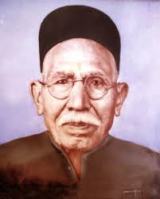
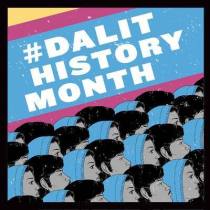
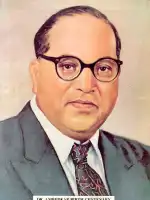


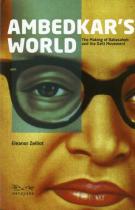
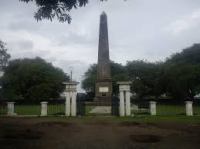
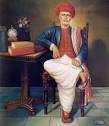


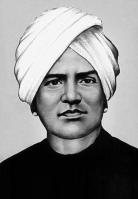

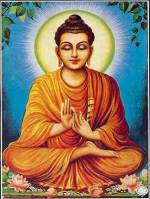

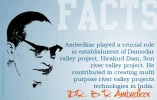

The bahujan samaj has been very fortunate to have a great & the real leader namely ‘MANYAVAR KANSHIRAMJI’ who changed the very concept of Bahujan movement. His great sacrifice shall be ever remembered…Let us walk the way he has shown us to reach our “MANZIL” of real independence……
LikeLike
Its very excellent article about Kanshi Ramji life and mission. I am with this.
LikeLike
Jai bheem Thanks for post. On 30-Nov-2016 1:14 pm, “Dr. B. R. Ambedkar’s Caravan” wrote:
> Pardeep posted: “” I will never get married, I will never acquire any > property, I will never visit my home, I will devote and dedicate the rest > of my life to achieve the goals of Phule -Ambedkar movement” These pledges > remind the work of Manywar Kanshiram Sahib wh” >
LikeLike